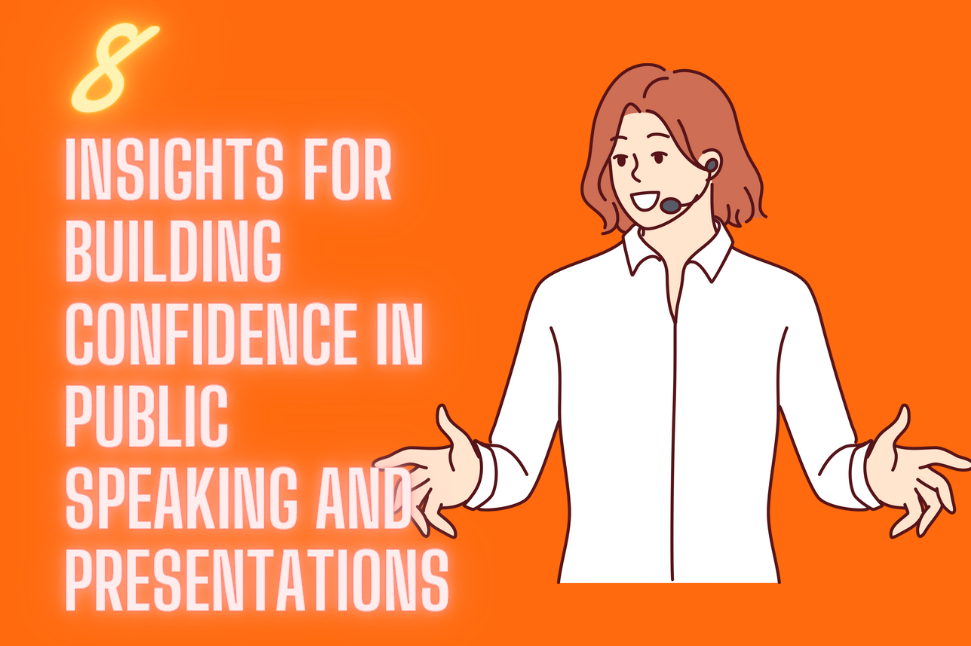Introduction
You’ve felt the jitters before stepping onto the stage, the butterflies fluttering in your stomach. But here’s the secret: you’re not alone.
You’re about to unlock eight powerful insights to transform your public speaking skills and boost your confidence. From honing your material to learning from every talk, we’ve got you covered.
Say goodbye to fear and hello to applause. Ready to captivate your audience? Let’s dive in and make those nerves work for you!
Know Your Material Inside Out
One can’t overstate the importance of mastering your material when aiming to deliver a compelling presentation with confidence. It’s the bedrock of your ability to engage with the audience and speak with authority. You’ve got to dig in, dissect every part of your content, and understand it from the inside out. This isn’t just about memorizing a script; it’s about absorbing the essence of your message so you can adapt on the fly if needed.
You’ll find that when you really know your stuff, you’re less likely to be thrown off by unexpected questions or technical glitches. Your deep knowledge allows you to improvise, providing detailed answers and elaborations that can make your presentation more interactive and dynamic. This isn’t just beneficial for your audience – it’s a lifeline for your confidence.
Practice Makes Perfect
Before your next presentation, thoroughly practicing your material can significantly boost your confidence. It’s not just about going over your notes a couple of times; you need to dive deep into your content. Rehearse out loud, as if you’re already in front of your audience. This helps you get comfortable with the rhythm and flow of your words, and you’ll discover which parts need smoothing out.
Don’t just stop at verbal practice; consider your body language, too. Stand in front of a mirror or record yourself to observe your gestures and posture. You’ll notice any distracting habits that you can then work to eliminate.
Remember, practice isn’t solely for memorization. It’s about making the content second nature, so you can focus on connecting with your audience rather than recalling your next line. Try to practice in different environments as well – this will make you more adaptable to unforeseen circumstances.
Lastly, simulate a Q&A session. Anticipate potential questions and practice your responses. This will prepare you to think on your feet and handle the interactive part of your presentation with ease.
With consistent practice, you’ll find yourself becoming a more confident and effective speaker.
Mastering the Art of Breathing
Frequently, you’ll find that controlling your breath can significantly steady your nerves and enhance your speaking delivery. As you stand before an audience, it’s not just about what you say, but how you say it. Your breath is the fuel for your voice, and mastering it’s key to a powerful presentation.
Start by practicing deep, diaphragmatic breathing. Inhale slowly through your nose, letting your diaphragm expand, not just your chest. This type of breathing calms your mind and provides a strong, steady flow of air for speaking. Before you go on stage, take a few moments to focus on deep, rhythmic breaths to center yourself.
While you’re speaking, pay attention to your breath. You’re likely to hold it when you’re nervous, which can cause your voice to shake or your mind to race. Instead, make a conscious effort to breathe between points. This pause not only allows you to catch your breath but also gives your audience a moment to digest what you’ve said.
Visualize Your Success
Imagine standing before an engaged audience, your words flowing effortlessly as you make powerful connections with every sentence.
By practicing mental rehearsal techniques, you’ll prepare your mind for a flawless performance.
Envisioning a positive outcome helps you tackle the nerves and transform fear into exhilarating energy.
Mental Rehearsal Techniques
Through mental rehearsal, you’ll hone your ability to deliver a compelling presentation by vividly picturing yourself succeeding on stage. Imagine each step, from your confident entrance to the final applause, with rich detail. Feel the texture of the podium, see the engaged faces in the audience, and hear your voice resonating clearly throughout the room. Practice this visualization regularly, and you’ll build a strong mental blueprint that your body can follow when the moment arrives.
Positive Outcome Imagining
Envision your triumph on stage, with every element of your presentation unfolding flawlessly, to instill a deep-seated belief in your impending success.
Imagine the audience’s faces, engaged and nodding along, as your words resonate with clarity and confidence.
You’re not just hoping for a positive outcome; you’re actively constructing it in your mind. By visualizing your success, you’re laying the groundwork for it to manifest.
Every gesture, every pause, and every inflection is just as you’ve imagined—perfect.
This isn’t wishful thinking; it’s a strategic rehearsal of victory, reinforcing your belief that you can and will deliver a stellar performance.
Overcoming Fear Visualization
You can conquer your public speaking fears by vividly picturing yourself excelling in front of an attentive audience. Imagine every detail: the applause, your clear voice cascading over the crowd, the engaging slides complementing your words. It’s all about seeing yourself succeed before it actually happens.
Harness the power of your mind’s eye to transform anxiety into excitement. Visualize the room layout, the faces in the crowd nodding in agreement, and feel the satisfaction of a well-made point. As you mentally rehearse, your confidence grows, your heartbeat steadies, and the fear dissipates.
This technique isn’t just wishful thinking; it’s a proven method to prime your brain for performance. By visualizing success, you’re laying the groundwork for it to unfold in reality.
Connect With Your Audience
Establishing a connection with your audience is vital for effective public speaking. You’ll need to master eye contact techniques to show you’re engaged and present.
Let’s explore how to enhance audience interaction to keep your listeners hooked from start to finish.
Eye Contact Techniques
Mastering eye contact is a pivotal skill that’ll help you forge a personal connection with each member of your audience during a presentation. When you’re standing up there, remember to scan the room gently. Don’t stare someone down, but instead, hold eye contact for a few seconds with different individuals throughout your talk. This creates an illusion of direct conversation and keeps listeners engaged.
You’ll find that varying your focus between the front, middle, and back sections of the audience ensures everyone feels included. If you’re nervous, look at the bridge of someone’s nose—it’ll appear as if you’re maintaining eye contact without the intimidation.
Practice these techniques to develop a confident, inclusive presence that resonates with your audience.
Audience Engagement Strategies
To truly captivate your audience during a presentation, it’s essential to employ effective engagement strategies that foster a dynamic and interactive atmosphere. Start by asking thought-provoking questions to prompt reflection or discussion. This not only piques interest but also makes your listeners feel like active participants.
Use storytelling to create an emotional connection; a well-told story can illustrate points more powerfully than data alone. Don’t shy away from humor either—it’s a brilliant tool to break the ice and keep people interested.
Moreover, integrate visual aids that complement your words, not overshadow them. They should enhance understanding and retention. Remember to check in with your audience regularly. Ask for feedback, gauge reactions, and adjust your pace accordingly. By being responsive, you’ll keep your audience engaged and invested throughout your talk.
Manage Your Body Language
While you focus on your message, it’s crucial that you also pay attention to your body language, as it can significantly impact how your audience perceives you. Your nonverbal cues can either undermine or underscore your words, so it’s important to manage them effectively.
Start with your posture. Stand tall and avoid slouching, as this conveys confidence and helps you project your voice better. Make eye contact with different parts of the audience throughout your presentation; it creates a connection and makes listeners feel acknowledged.
Remember to use your hands to emphasize points, but don’t overdo it. Gestures should feel natural and purposeful, not distracting. Practice varying your gestures to match the tone and content of what you’re saying. This congruence lends authenticity to your presentation.
It’s also essential to monitor your facial expressions. They should align with the message you’re delivering. A smile can be disarming and warm, but it mightn’t be appropriate when discussing serious topics. Be mindful of how your expressions might be interpreted.
Lastly, be aware of nervous ticks, like fidgeting or pacing, which can betray anxiety. Work on controlling these impulses through practice and perhaps some deep breathing before you start. Your body language is a powerful tool—harness it to enhance your public speaking presence.
Incorporate Positive Self-talk
Before stepping onto the stage, reassure yourself with positive affirmations that you’re capable and prepared for the presentation. It’s not just about what you say to the audience, but also what you tell yourself before you even begin. Positive self-talk can be a powerful tool in your arsenal to combat nerves and self-doubt.
Remind yourself of your strengths and past successes. You’ve done your homework, practiced your delivery, and you know your material inside out. Tell yourself, ‘I’ve got this,’ and believe it. Your internal dialogue sets the tone for your confidence level, so keep it encouraging and optimistic.
It’s also important to replace negative thoughts with constructive ones. If you catch yourself thinking, ‘I’m going to mess up,’ flip that around to, ‘I will speak clearly and effectively.’ This reframing shifts your focus from fear to action.
Lastly, visualize your success. Picture yourself delivering a knockout presentation, receiving applause, and feeling proud. Use this visualization technique to bolster your confidence right before you take the spotlight. Remember, you’re your own best cheerleader – pep yourself up and you’ll not only feel more confident, but you’ll also be more likely to captivate your audience.
Learn From Each Experience
Every public speaking opportunity, whether a triumph or a challenge, offers you invaluable lessons that contribute to your growth as a presenter. After each speech or presentation, take the time to reflect on what worked well and what didn’t. Did you engage your audience? Were your points clear and impactful? Even if you stumbled or felt nervous, there’s a takeaway that can bolster your skills for next time.
Remember, you’re your own best coach. Analyze recordings of your performances. You’ll notice nuances in your gestures, tone, and pacing that you can tweak. Pay attention to the audience’s reactions too—they’re key indicators of your presentation’s effectiveness.
Jot down a few notes immediately after your presentation while the experience is fresh. What parts do you feel proud of? Where do you think you could improve? Set specific goals for your next presentation based on these reflections.
Frequently Asked Questions
How Can I Recover if I Forget an Important Point or Go Off-Script During My Speech?
If you forget something or stray off-script during a speech, don’t panic. Quickly summarize your last point, and smoothly transition into another relevant topic. You can also use a brief pause to collect your thoughts. It’s okay to admit you’ve lost your place; your audience will appreciate your honesty. Keep your tone confident and continue.
Afterward, practice more to reduce the chance of it happening again. Stay calm, and you’ll recover gracefully.
What Should I Do if I’m Faced With a Hostile or Unresponsive Audience?
If you’re faced with a hostile or unresponsive audience, don’t panic. First, try to understand their perspective—why might they be reacting this way?
Keep your tone respectful and open. Use humor to lighten the mood if appropriate.
Engage with them by asking questions to draw them in, and be prepared to adapt your message if necessary.
How Can I Effectively Handle Unexpected Technical Difficulties, Like a Microphone Failure or Presentation Glitch?
When you’re hit with technical issues like a mic failure or a slideshow problem, stay calm. You’ve got this!
Quickly assess whether you can fix the issue without disrupting the flow. If it’s a quick fix, handle it smoothly.
Can’t solve it fast? Pivot to engaging your audience directly—your voice and presence are powerful without the tech.
Keep your composure, crack a joke perhaps, and remember, your message is key, not the gadgets.
Is It Better to Memorize My Speech or Use Cue Cards, and How Can This Choice Affect My Confidence?
You’ll want to weigh the pros and cons of memorizing your speech versus using cue cards.
Memorizing can make you seem more polished, but if you blank out, it might rattle your confidence.
Cue cards provide a safety net, allowing you to glance at your main points without the pressure of reciting word for word.
Your choice ultimately impacts your confidence, depending on which method you feel more secure and comfortable with.
Can You Provide Strategies for Managing Questions From the Audience That I May Not Have the Answer To?
When you’re faced with audience questions you can’t answer, it’s okay to admit it. Just say, ‘I don’t have that information right now, but I can find out for you.’ Offer to follow up after the presentation.
This honesty builds trust and shows you’re committed to providing accurate information. Also, consider redirecting the question to the audience to spark discussion and buy yourself some time to think about a potential answer.
Conclusion
You’ve got this! By knowing your content cold, practicing relentlessly, and breathing deeply, you’re setting the stage for success.
Envision your triumph, engage your listeners, and control your body language to exude confidence.
Speak kindly to yourself and absorb every lesson from each presentation. Keep pushing forward.
With each step, you’re not just delivering a speech; you’re becoming a more powerful and persuasive speaker.
Remember, every great orator started exactly where you’re now.





